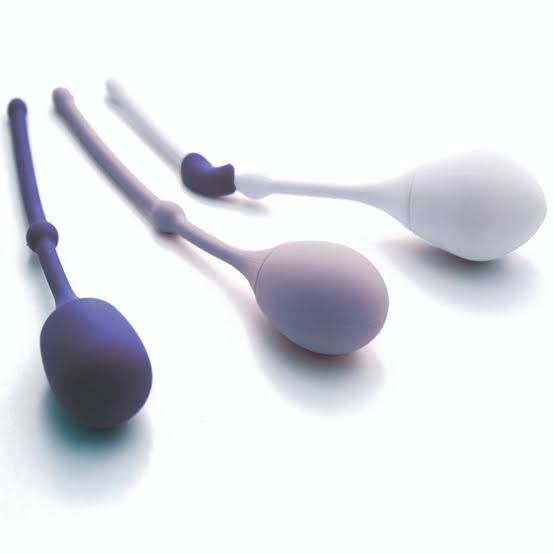How to Tighten the Vagina: Effective Methods for Vaginal Health
Vaginal health is an important topic for many women, and the desire to maintain or restore vaginal tightness is a common concern. Over time, factors like childbirth, aging, hormonal changes, and lifestyle can affect the elasticity and muscle tone of the vaginal walls. While there are many options to address these changes, it is important to approach vaginal tightening with caution and awareness. This article will explore effective methods for enhancing vaginal health, while also offering essential advice on practices to avoid.

How to Tighten the Vaginal
1. Pelvic Floor Exercises (Kegel Exercises)
Pelvic floor exercises, commonly known as Kegel exercises, are one of the most recommended and effective ways to tighten the vagina naturally. These exercises involve contracting and relaxing the muscles that support the uterus, bladder, and rectum.
How to Do Kegel Exercises:
Identify the correct muscles: These are the muscles that stop the flow of urine. To locate them, try stopping your urine stream while using the bathroom.
Tighten the pelvic muscles and hold for 5 seconds.
Relax the muscles for 5 seconds.
Repeat this process 10-15 times, aiming for three sets a day.
With consistent practice, Kegel exercises can help strengthen the vaginal muscles, leading to a firmer and tighter feeling. This method also helps improve bladder control, sexual satisfaction, and overall pelvic health.
2. Vaginal Cones and Weights
Vaginal cones and weights are designed to help strengthen the pelvic floor muscles by adding resistance. These devices are inserted into the vagina, and the user must contract the muscles to hold the weight in place and stop the weights from slipping out

How to Use Vaginal Weights:
Insert the cone into the vagina.
Contract your pelvic muscles to keep the weight inside.
Start with a lighter weight and gradually increase as the muscles strengthen.
Aim for 10-15 minutes of use per day.
This technique can be particularly effective when combined with Kegel exercises. However, it’s crucial to follow the product instructions and avoid overexerting the muscles to prevent strain or injury.
3. Vaginal Rejuvenation Treatments (Vaginoplasty)
Vaginoplasty is a surgical procedure designed to tighten the vaginal walls, typically after childbirth or aging. This procedure involves removing excess vaginal tissue and tightening the muscles for a more youthful and firm appearance.
What to Expect from Vaginoplasty:
Vaginoplasty is a surgical procedure that should only be performed by a qualified and experienced surgeon.
The procedure can be combined with labiaplasty, which alters the size and shape of the labia.
Recovery times can vary, and there are risks associated with any surgery, including infection or scarring.
Vaginoplasty may be an option for women who are seeking more significant results or who haven’t found success with non-surgical methods. It is essential to consult with a healthcare professional to assess whether this procedure is right for your needs.
4. Hormonal Therapy
For women experiencing vaginal laxity due to menopause, hormonal changes can play a significant role. A decrease in estrogen levels can lead to vaginal dryness and reduced elasticity. Hormonal treatments may help address these issues and restore vaginal tone.
5. Vaginal Rejuvenation Procedures (Laser or Radiofrequency Therapy)
Non-surgical vaginal rejuvenation procedures, such as laser therapy and radiofrequency treatments, use energy to stimulate collagen production in the vaginal walls. These treatments aim to enhance elasticity and tighten the vaginal tissues without the need for surgery.
Types of Procedures:
Laser Vaginal Rejuvenation: This treatment uses focused laser energy to stimulate collagen production and tighten vaginal tissues.
Radio-frequency Therapy: This non-invasive procedure uses heat energy to rejuvenate vaginal tissues and enhance firmness. In the procedure, radio-frequency energy is delivered via by a wand by a consultant gynaecologist to tighten the inner and outer vaginal area. It works by heating up the tissue and delivering just the right amount of alternating pulses of heating and cooling.
While these treatments can offer noticeable results, they may require multiple sessions and can be costly. It’s crucial to seek out a licensed practitioner and discuss potential risks and benefits before committing to these procedures.
6. Methods to Avoid for Vaginal Tightening
While some alternative methods may be touted as ways to tighten the vagina, it is essential to avoid practices that can be harmful or ineffective. The following methods should never be attempted:
•Hot Water: Applying hot water to the vaginal area can cause irritation, burns, and discomfort.
•Steam: Vaginal steaming can disrupt the natural pH balance, leading to infections and other complications.
•Alum: This substance can cause irritation, infection, and may even lead to infertility when used improperly.
•Herbal Concoctions: Many herbs and homemade mixtures can disrupt the vaginal flora, leading to infection or allergic reactions.
•Aloe Vera: While aloe vera may have some soothing properties for external skin, it can cause irritation in the sensitive vaginal area.
•Douching: Douching is not recommended as it can alter the vaginal pH, leading to infections and an increased risk of complications.
•Toothpaste: Using toothpaste in the vagina is dangerous and can cause burns and infections.
These methods can cause serious health risks, including infections, allergic reactions, and long-term complications. It is essential to focus on safe, medically-backed approaches to improve vaginal health.
Healthy Lifestyle for Vaginal Health
Maintaining a healthy lifestyle is crucial for vaginal health. A balanced diet, regular exercise, and proper hydration all contribute to overall pelvic health. Additionally, staying at a healthy weight can reduce the risk of pelvic floor dysfunction, which can affect vaginal tone.
Tips for Supporting Vaginal Health:
Eat a nutritious diet rich in vitamins, antioxidants, and omega-3 fatty acids.
Stay hydrated to prevent vaginal dryness.
Exercise regularly, especially pelvic floor exercises, to maintain muscle tone.
Practice good hygiene and wear breathable fabrics to avoid irritation.
NaijaHealth Take
Vaginal tightness is a common concern, but there are various safe and effective ways to maintain or improve vaginal health. Whether through pelvic floor exercises, non-invasive treatments like laser therapy, or surgical procedures like vaginoplasty, women have options that cater to different needs and preferences.
Always consult with a healthcare professional before trying any new treatments, especially those that involve hormones or surgery. It is equally important to avoid harmful practices that can do more harm than good.



